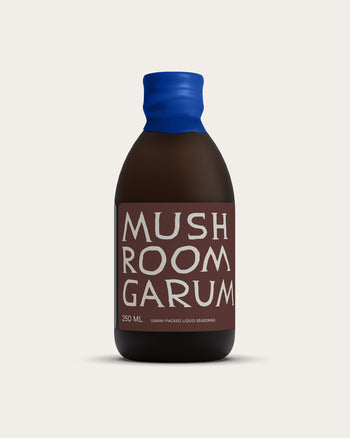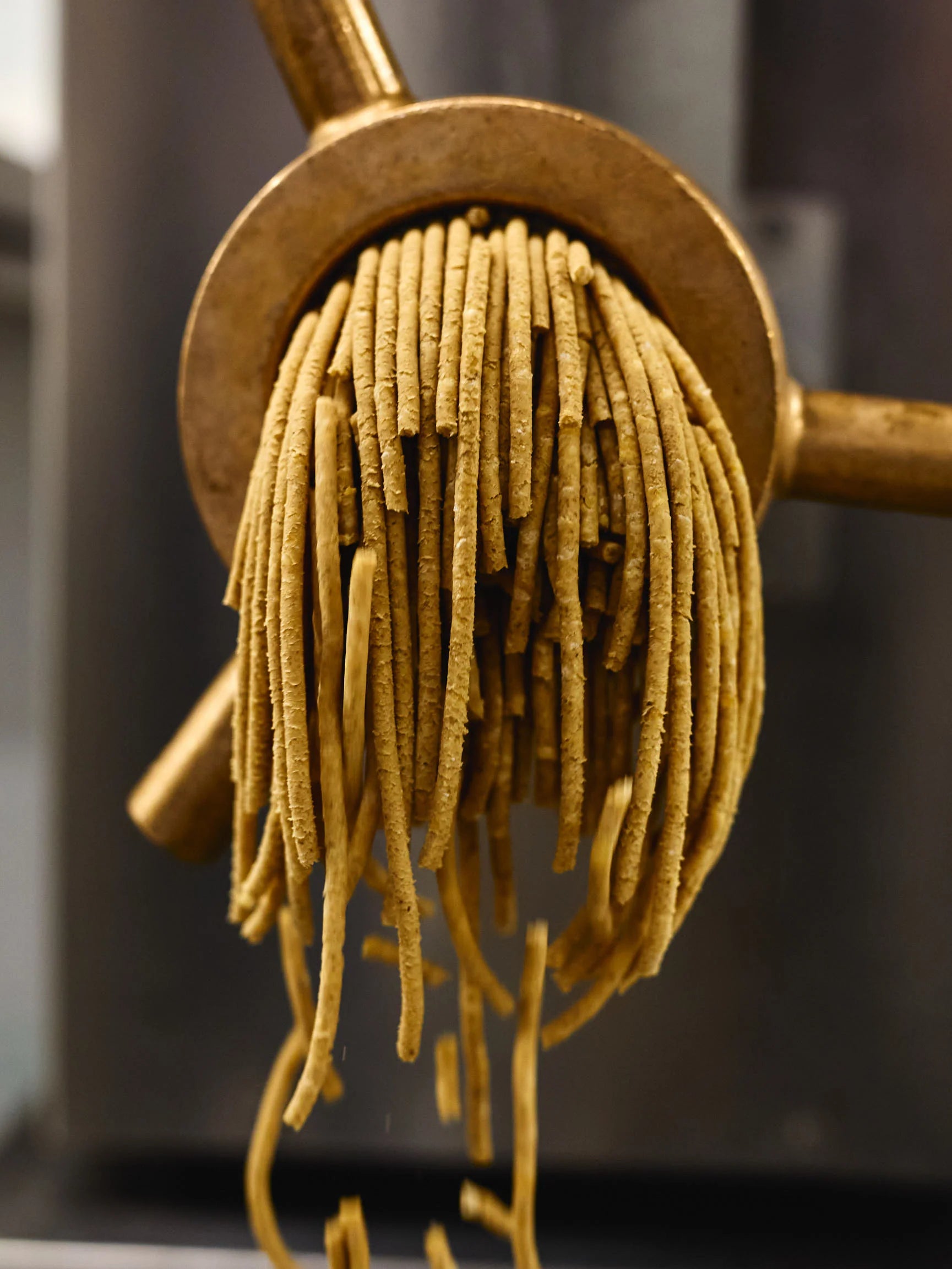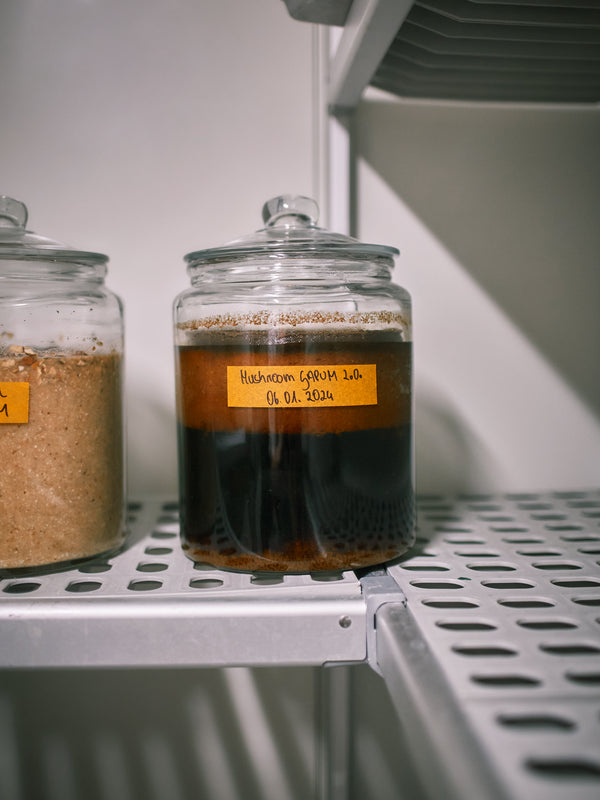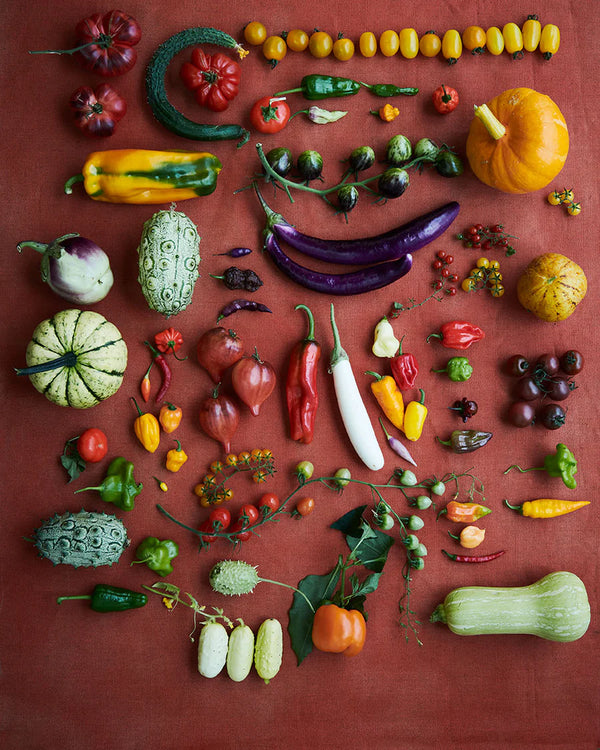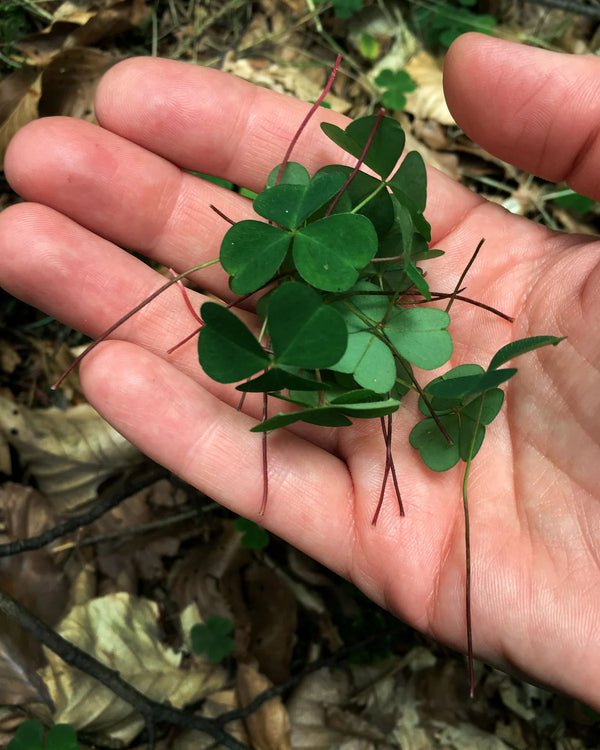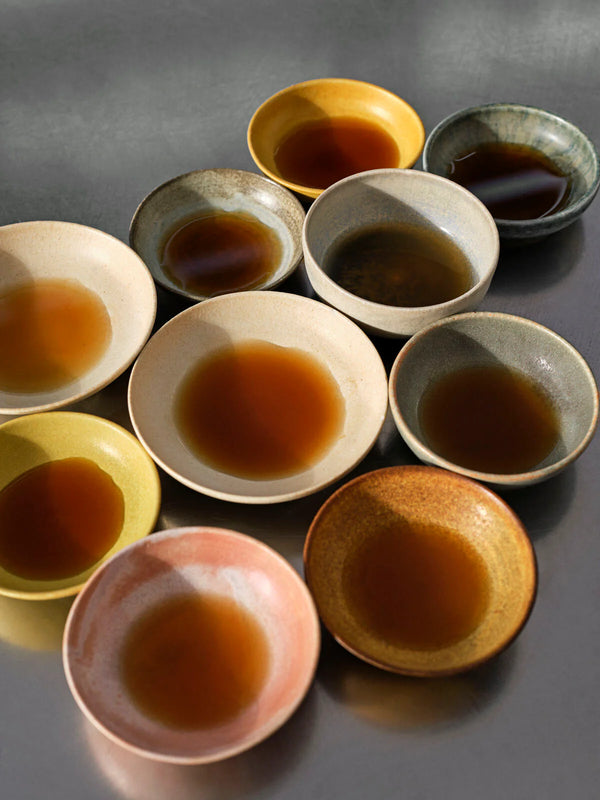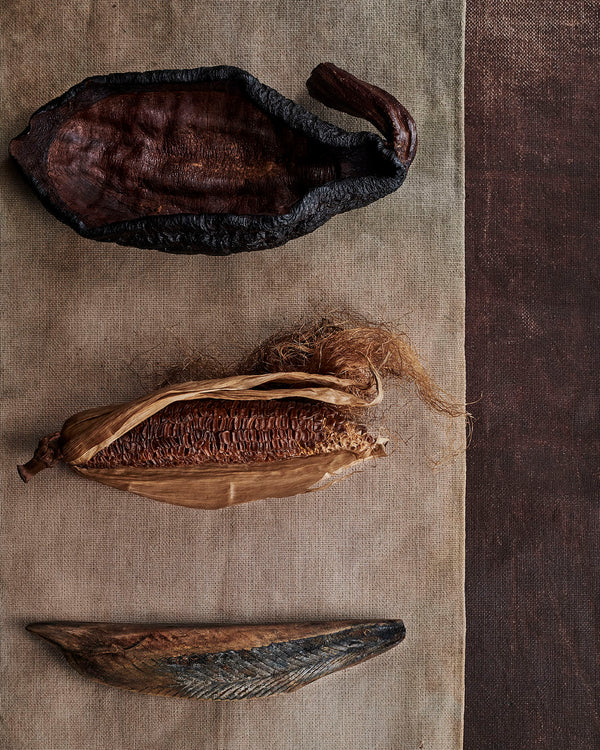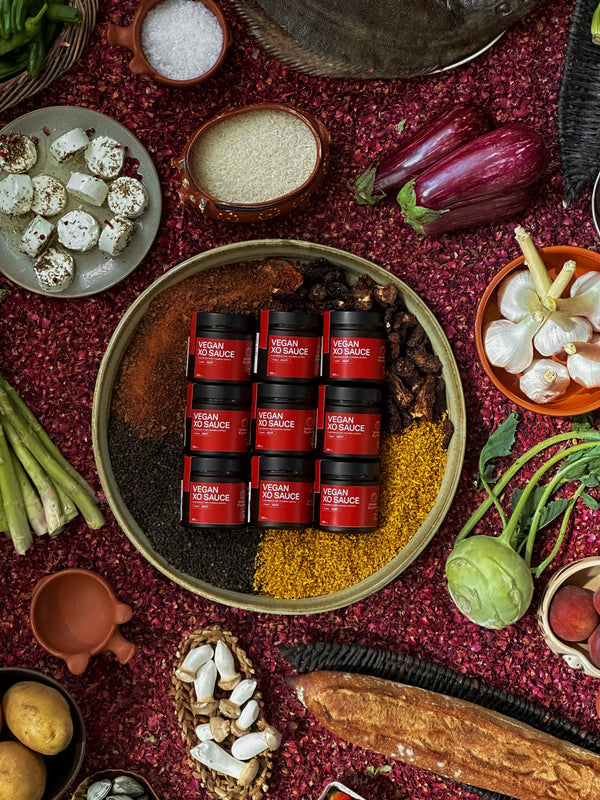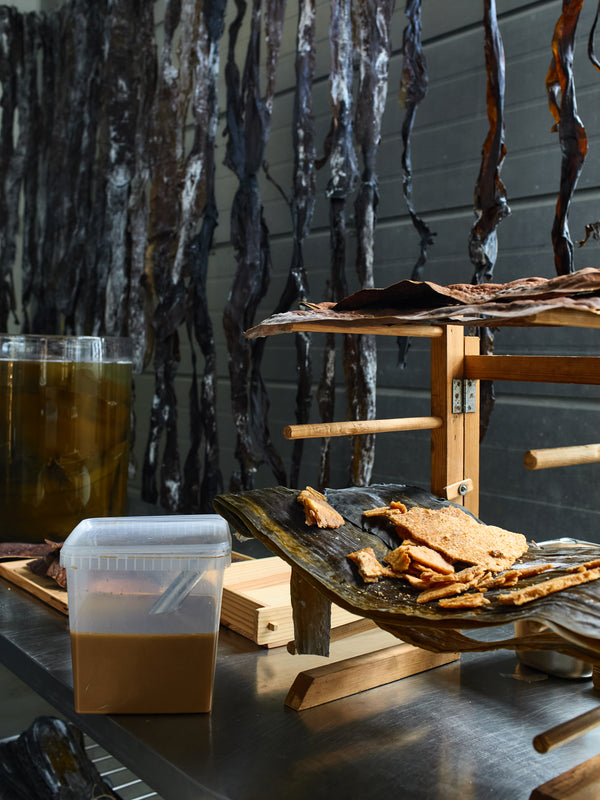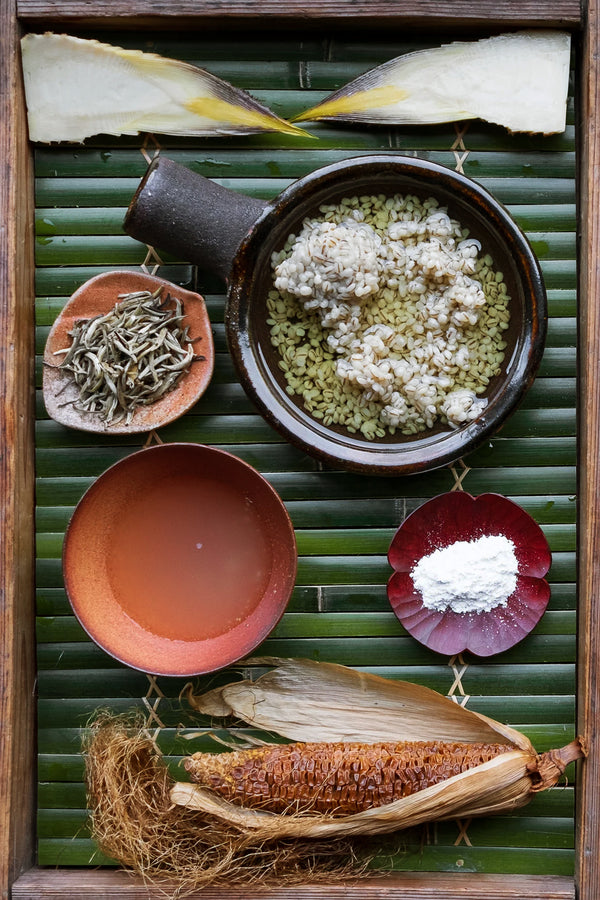By contrast, in ancient Asia, with the exploration of koji-making, people endeavored to extract flavor and umami from whatever humble legume was available in abundance at the time (mostly soybeans). Miso became a way to turn a plain, everyday ingredient into a pantry essential that made everything taste better. In a society where “acquiring the best possible ingredients” was not always economically feasible, ferments like miso allowed people to take “passable” ingredients and elevate them. Unlike a pesto or vinaigrette, which can be made a la minute to boost a dish’s deliciousness, fermenting legumes takes a long time. Before the advent of refrigeration, food production had to follow a strictly seasonal cycle: misos were only made from late Fall to Winter, to make the best of the harvest season.
It's hard to believe that the precise origins of miso remain a subject of debate in academic circles: there is a Chinese theory, and a Japanese theory. Instead of going down that rabbit hole, let’s focus on the common points. We came up with an interesting detail during our research, which is that miso was once considered a luxury item. The characters for "miso" first appeared in literature during the Heian period (794 to 1185). It was used to pay the salaries of the elite and/or presented as a gift; a valuable commodity that did not reach the common people. Miso was not initially used as a food seasoning like we use it today; it was spread on food, or directly licked and eaten, just as it is.
Of course, like many other foods throughout the ages (salt, chocolate, tender cuts of meat...), economic development and population growth catalyzed the democratization of miso. Now, the delicacy is a staple of Japanese food culture and of the noma pantry.

Now we turn to an important question we asked ourselves fifteen years ago: Could we make a miso in Copenhagen that was truly noma and not just a Japanese facsimile?
We knew one thing: it’s not enough to make the same koji, the same miso, and the same miso soup, only with gooseberry or blackcurrant shoots thrown in. So, we wondered, What are the boundaries of miso as a concept? If we don´t use soybeans, for instance, is it still miso? And how can we embrace this tradition without appropriating?
It was a difficult task, not because we were trying to create something “new”, but because everything has been done already. There are thousands of varieties of shoyu, koji, and miso, each with different characteristics and applications. As a result, chefs in Japan have multitudes of seasoning tools at their disposal, all of which taste distinct but also distinctly Japanese. We needed a similar pantry of our own.
Our Nordic version of miso is perhaps the most successful attempt we’ve had at building such a pantry. And it began its life as a failed tofu. We were trying to see if we could coagulate milk squeezed from local yellow peas into a sort of tofu. We committed weeks to the effort before realizing that this high-protein legume might actually be better suited for fermentation. From there, we followed traditional miso-making techniques—replacing Japanese inputs with Nordic ones—and ended up with yellow pea miso, aka peaso.
Peaso doesn’t taste like miso; at least we don’t think so. It´s only 4% salt compared to 12%-20% salt of ordinary Japanese miso. Lower salt means better conditions for bacteria and yeast in order to get a wild, complex flavor. It tastes distinctly of Denmark, making it both uniquely ours and still greatly indebted to Asia. It’s a perfect collision of a concept that is foreign to this part of the world with an ingredient with which we’re very well acquainted. That’s how we think food should move forward; observe and transcribe developed techniques and apply them to new ingredients more expressive of your place in the world, all the while being as respectful as possible to the original. Most of the best things in Scandinavia— and the world, for that matter—have a similar story: they get introduced to a new place, they adapt, find their life and eventually become part of history. It’s like immigration; microbial immigration. Here is a photo of the very first up-scaled peaso production; immigration is a messy happen-stance and it’s crazy to think that we went from fermenting in an attic to fermenting in a proper Fermentation Lab.

“Miso”, but not really…
As we established, miso is a solid-state fermentation of legumes with koji and salt. Legumes contain a good amount of starches and proteins, ideal for the enzymes produced by koji to break down.
The basic formula looks like this:
Starchy substance + koji (enzyme) + salt = miso
By this definition, we can find many other similar products in different cultures with commonalities to “miso” in everything but name, all the way from Korea to Indonesia.
Chinese-style misos are known collectively as Jiang, most of which are fermented with Aspergillus oryzae molds but many of which contain neither soybeans nor grain koji. Basic ingredients include nuts and seeds, broad beans, flour or steamed bread, vegetables, and many types of seafood. The most common varieties in China are Douban Jiang (chili and fermented fava beans) and Tian mien Jiang (Sweet Wheat-flour).
Korea's three main fermented soy foods are soybean miso (doen jang), soy sauce (gan jang), and red-pepper miso (Gochu jang). Jang is widely used in hot spicy soups (chigé/jigae) that are generally thicker than Japanese miso soups. Gan jang is sweeter and stronger than Japanese shoyu and is made with soybeans, salt, and water, without the use of koji grains.
Indonesian tauco is a fermented soybean paste, a variety of soybean miso with a long history that is produced and consumed mainly in West Java, the center of production being the town of Cianjur. There are four different flavors and consistencies of tauco, all of which are dark brown in color and usually known simply as tauco. This is a vast universe of ferments.
—
Further exploration
The Book of Miso by William Shurtleff
This is the most comprehensive book ever published about the history of miso and related products. It was compiled, one record at a time, over a period of 42 years. It is also widely regarded as the most current and useful source of information on the subject.
In The Miso Soup by Ryu Murakami
One for the literature lovers! This is a novel by Ryu Murakami and has nothing to do with food, actually. But it's interesting to see how a Japanese writer seems to have seized on the powerful evocations of the term.





